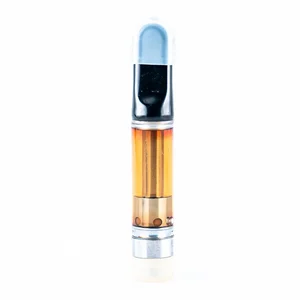Table of Content
- Understanding Chronic Pain
- How Cannabis Relieves Pain
- Exploring Different Types of Cannabis Products
- Safe and Responsible Cannabis Use
- Legal Considerations and Access to Cannabis
- Conclusion
- FAQ
Chronic pain can be an overwhelming and debilitating condition that affects millions of people worldwide. Conventional treatments often fall short in providing long-lasting relief, leaving individuals desperate for alternative solutions. In recent years, an intriguing contender has emerged on the scene: cannabis for chronic pain.
While the idea of using cannabis as a pain-relieving agent is not entirely new, there is a growing body of scientific research shedding light on its potential efficacy. In this article, we explore its role in alleviating chronic pain.
Understanding Chronic Pain
Chronic pain is persistent discomfort that lasts for an extended period, typically three months or more. Unlike acute pain, a warning sign of injury or illness, chronic pain persists beyond the expected healing time and becomes a condition. It can manifest in various forms, including neuropathic pain, musculoskeletal pain, and inflammatory pain.
Numerous medical conditions are associated with chronic pain. These include fibromyalgia, arthritis, back pain, migraines, and nerve damage. The impact of chronic pain extends beyond the physical realm, affecting mental health, emotional well-being, and overall functioning. Sleep disturbances, anxiety, depression, and social isolation are common consequences experienced by individuals grappling with chronic pain.
Managing chronic pain poses significant challenges. Traditional pain medications, such as opioids, may provide temporary relief but come with the risk of addiction and other adverse side effects. Furthermore, some individuals may not respond well to these medications or may develop tolerance over time, diminishing their effectiveness.
How Cannabis Relieves Pain
To understand how cannabis can potentially alleviate chronic pain, we must first explore the endocannabinoid system (ECS). The ECS is a complex network of receptors and molecules throughout the body, regulating various physiological processes, including pain perception.
Cannabis contains over 100 different cannabinoids, but two of the most well-known are tetrahydrocannabinol (THC) and cannabidiol (CBD). THC is primarily responsible for the psychoactive effects associated with cannabis, while CBD offers therapeutic benefits without inducing a “high.” These cannabinoids interact with the receptors in the ECS, modulating pain signals and reducing inflammation.
THC activates the CB1 receptors in the ECS, predominantly in the central nervous system. This interaction leads to a decrease in pain transmission and alters the perception of pain. Conversely, CBD influences the CB2 receptors, primarily located in the peripheral nervous system and immune cells. CBD’s anti-inflammatory properties can help alleviate pain associated with arthritis.
Clinical studies have provided evidence supporting the efficacy of cannabis in pain relief. Research has shown that cannabis can effectively manage neuropathic pain, chronic pain associated with multiple sclerosis, and cancer-related pain. Moreover, cannabis has been found to enhance the analgesic effects of opioids, allowing for reduced opioid dosages and minimizing their side effects.
Exploring Different Types of Cannabis Products
Overview of Various Cannabis Products
When it comes to cannabis for chronic pain management, various types of products are available in the market. Each product offers a unique way of consuming cannabis, and understanding their differences can help individuals make informed choices.
Flower: Cannabis flower, also known as bud, is the most recognizable form of cannabis. It can be smoked using a pipe, bong, or rolled into a joint. Smoking flower provides quick onset of effects, making it a popular choice for individuals seeking immediate pain relief.
Concentrates: Cannabis concentrates are highly potent forms of cannabis that have been extracted to concentrate the cannabinoids. They come in various forms, such as oils, wax, shatter, and tinctures. Concentrates are often consumed by vaporization or dabbing and offer a faster onset of effects than flowers.
Edibles: Edible cannabis products include infused foods and beverages. They provide a discreet and long-lasting method of consumption, as the effects take longer to kick in but can last for several hours. Edibles are available in different forms, such as gummies, chocolates, and infused drinks.
Topicals: Cannabis-infused topicals are applied externally to the skin and relieve localized pain. They come in creams, lotions, balms, and patches. Topicals are beneficial for targeting specific areas of pain, such as joint or muscle discomfort.
Considerations for Selecting the Right Product for Pain Management
When selecting a cannabis product for pain management, several factors should be taken into consideration:
Mode of Administration: Consider your preferred method of consumption. Do you prefer smoking, vaporizing, or ingesting? This can help determine which product type is most suitable for you.
Onset and Duration: Different products have varying onset times and durations of effects. If you need immediate relief, smoking or vaporizing may be preferred. Edibles or topicals might be more suitable if you require long-lasting pain management.
THC-to-CBD Ratios: The ratio of tetrahydrocannabinol (THC) to cannabidiol (CBD) in a product can influence its effects. THC is known for its psychoactive properties, while CBD offers more therapeutic benefits without inducing a “high.” Consider the desired balance between these cannabinoids based on your pain management needs.
Strain Selection: Different cannabis strains have varying levels of cannabinoids and terpenes, which contribute to their unique effects and aromas. Some strains may be more effective for certain types of pain conditions. Consulting with knowledgeable professionals or researching can help determine the most suitable strains for pain management.
Safe and Responsible Cannabis Use
Dosage Guidelines and Titration for Optimal Pain Relief
Finding the proper dosage of cannabis for pain relief is crucial. It is recommended to start with a low dose and gradually increase it until the desired effects are achieved. This process, known as titration, allows individuals to find their optimal dosage while minimizing the risk of adverse effects.
Potential Side Effects and Their Management
While cannabis can relieve pain, being aware of potential side effects is essential. These may include dry mouth, red eyes, impaired coordination, and temporary memory impairment. If experienced, these side effects are usually mild and temporary. Staying hydrated, using eye drops, and avoiding activities that require full motor function during the initial use can help manage these effects.
Risk Factors and Contraindications for Cannabis Use
Certain individuals may be at higher risk or have contraindications for cannabis use. These may include individuals with a history of substance abuse, mental health disorders, cardiovascular conditions, or pregnancy. It is crucial to consult with healthcare professionals to assess individual risks and determine if cannabis is suitable for pain management.
Best Practices for Safe Consumption and Harm Reduction
To ensure safe consumption and minimize potential risks, it is essential to follow the best practices:
- Purchase from Legal and Reputable Sources: Obtain cannabis products from licensed dispensaries or trusted sources to ensure quality and safety.
- Start Low and Go Slow: Begin with a low dosage and gradually increase it to find the optimal amount to relieve pain without unwanted effects.
- Avoid Mixing with Alcohol or Other Substances: Combining cannabis with alcohol or other substances can amplify the impact and increase the risk of adverse reactions.
- Store Safely and Keep Out of Reach: Store cannabis products in a secure place, away from children, pets, and unauthorized individuals.
- Know Your Limits: Be mindful of your tolerance and how cannabis affects you personally. Respect your limits to avoid overconsumption.
Legal Considerations and Access to Cannabis
Access to cannabis for chronic pain management is subject to legal considerations that vary across different regions. The current legal status of cannabis, whether for medical or recreational use, depends on the jurisdiction. Individuals need to understand the specific regulations in their area to ensure compliance with the law. In many cases, accessing cannabis for chronic pain requires medical recommendations or prescriptions.
Healthcare professionals play a crucial role in evaluating the patient’s condition, exploring alternative treatments, and determining if cannabis is a suitable option. Licensed producers and dispensaries are authorized entities that provide cannabis products, ensuring adherence to quality standards and regulations. Additionally, online options have emerged as a convenient and discreet means of purchasing cannabis, often requiring age verification and compliance with legal requirements.
Conclusion
Cannabis shows promise as a potential solution for chronic pain management. Scientific research supports its efficacy in relieving pain and reducing inflammation by interacting with the endocannabinoid system. When exploring cannabis for pain relief, considerations such as the product type, dosage guidelines, and understanding of potential side effects are essential for safe and responsible use.
However, it is crucial to navigate the legal landscape surrounding cannabis, understand the current legal status, access it through medical recommendations, and be aware of patient rights. By considering these factors and working closely with healthcare professionals, individuals can explore the benefits of cannabis for chronic pain management in a safe, effective, and legally compliant manner.
FAQs
What type of cannabis is best for chronic pain?
The type of cannabis best for chronic pain can vary depending on the individual and their specific needs. However, strains that are high in both THC and CBD have shown potential for pain relief. THC provides analgesic effects, while CBD has anti-inflammatory properties that can help reduce pain and inflammation.
Is cannabis good for chronic back pain?
Cannabis has shown promise in providing relief for chronic back pain. Its analgesic properties can help alleviate pain and discomfort associated with this condition. THC and CBD have demonstrated potential benefits for back pain, with THC providing immediate pain relief and offering anti-inflammatory effects.
How do you deal with severe chronic pain?
Dealing with severe chronic pain can be challenging, but there are various approaches that individuals can consider. This may include a combination of medications, physical therapy, cognitive-behavioural therapy, and lifestyle modifications. Additionally, cannabis can be a potential option for pain relief, but it should be used under healthcare professionals’ guidance and in compliance with legal regulations.
What cannabis is good for nerve pain?
Cannabis has shown promise in providing relief for nerve pain. Strains high in THC, such as certain Indica-dominant strains, are often recommended for managing nerve pain due to their analgesic properties.






